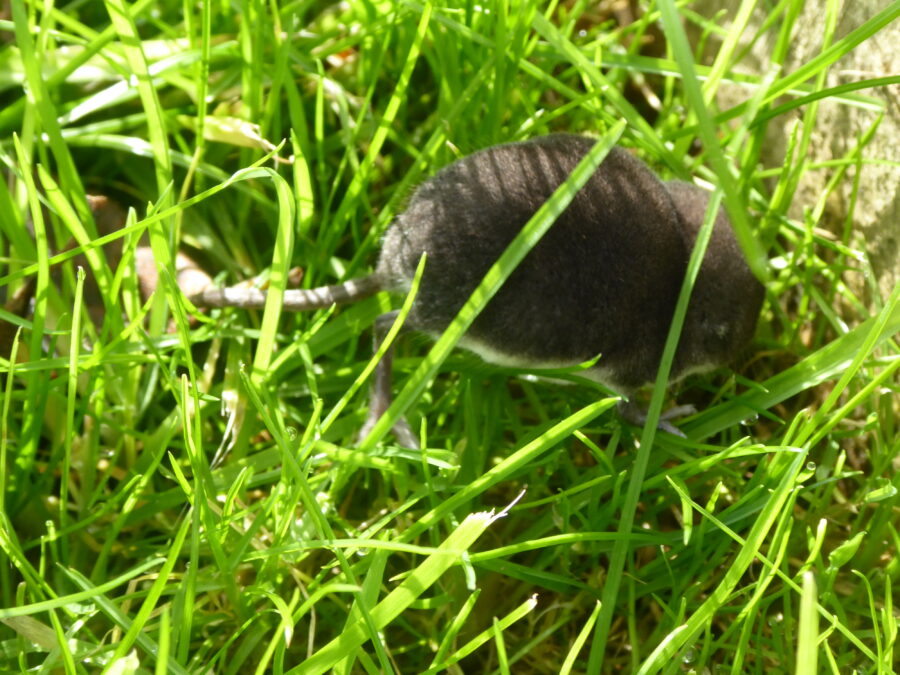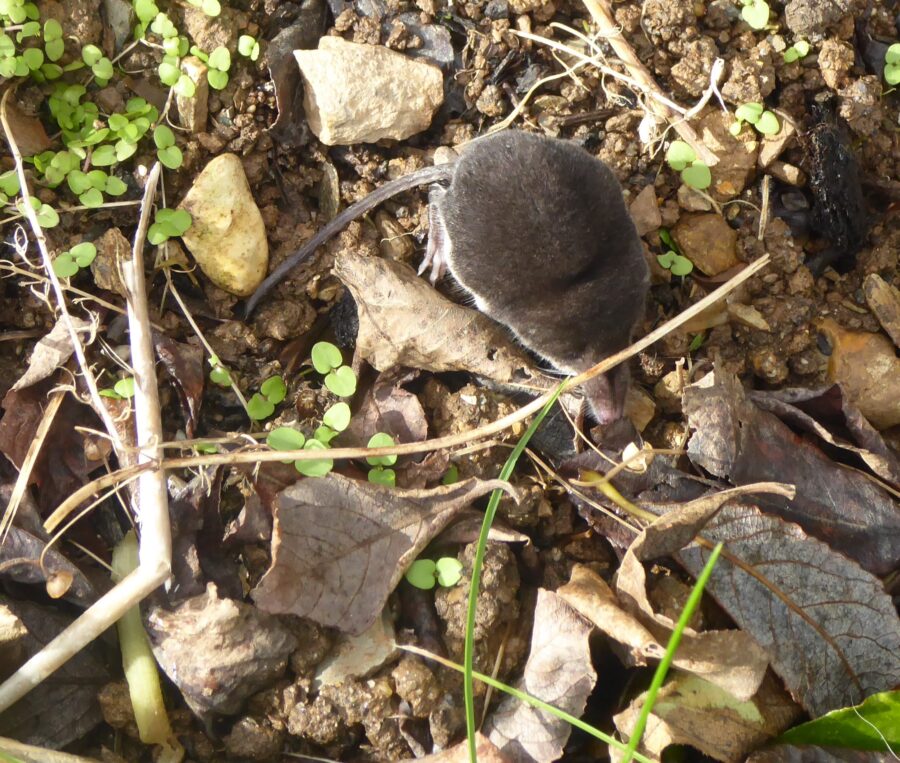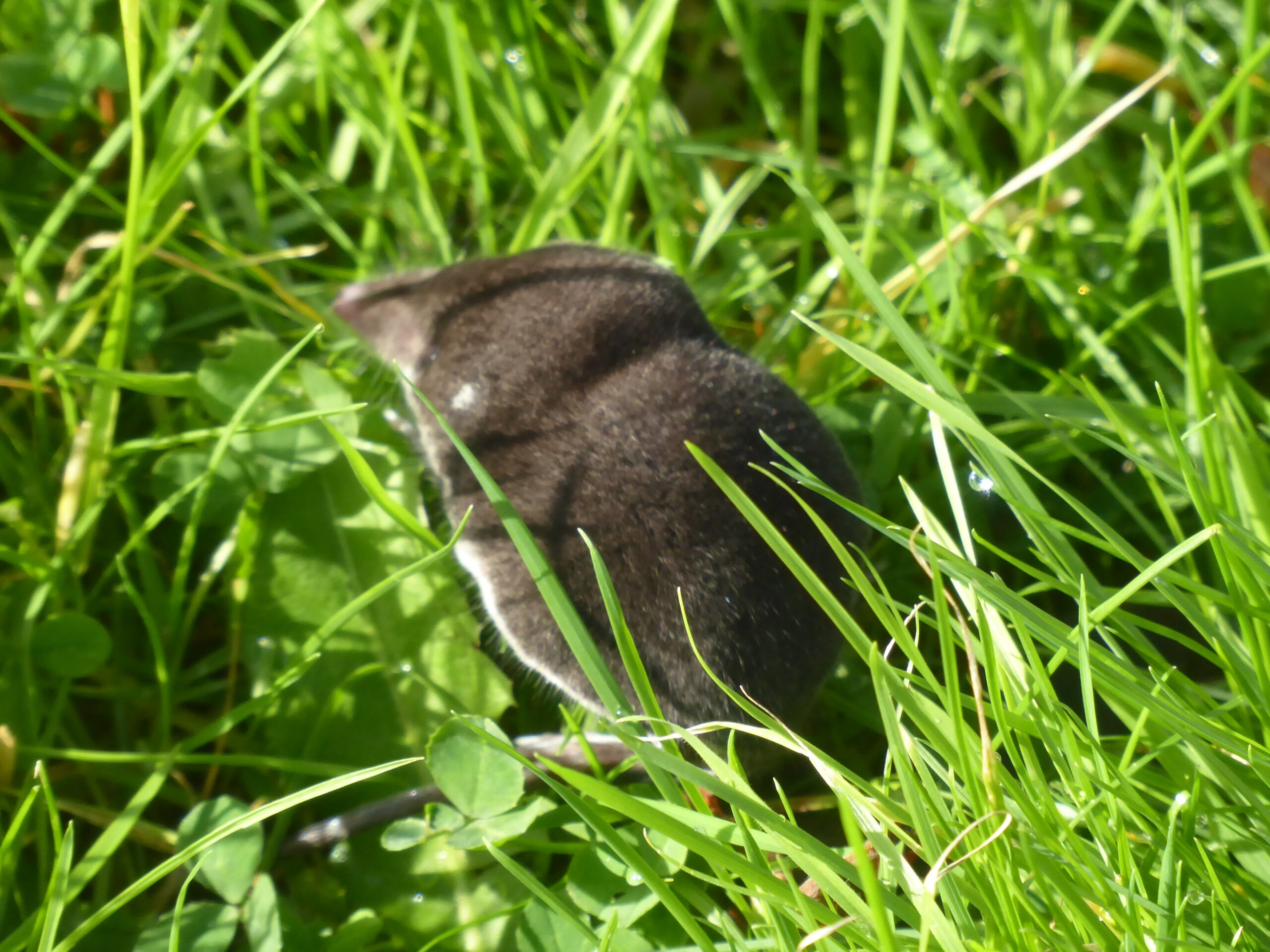On Monday, something very exciting happened. Mr C. called me to the kitchen window as he had seen a kestrel landing on the lawn. Of course I was too late, and the kestrel had flown off, but Mr C. spotted what had caught the kestrel’s attention.
I hurried down to the lawn and this little creature was rooting around in the grass, as though it was looking for a hole to bolt down. It let me get up quite close and at one point it was scuffling around my feet. This was great for photos, but I got far more of its rear end than its face. It was so black and its fur so short and thick, that I was trying to see its front paws to make certain it wasn’t a mole. Also, I wanted to get a good look at its snout and tail, just to make sure.

Obviously a shrew because of its distinctive long snout, at first I assumed it was a pygmy shrew as that’s the only kind I’ve seen in the garden. However, I did think it was a bit big for a pygmy shrew and the water shrew is the largest of British shrews. Then there was the colouring – you can see the clear demarcation of black top and white belly, plus white tufts by its ears. Plus, if you zoom into the picture below you can see white hairs on its otherwise smooth tail. All these attributes are indicative of a water shrew.

So, I’m going to count it, as clearly it has come up from the watermeadow, right?
But what was it doing in the garden? Water shrews typically rest in their burrows during the day and emerge at night to catch insects and other invertebrates, as well as aquatic species like shrimps, newts, frogs, and small fish, which they dive for. Being semi-aquatic, it prefers a waterside habitat, or damp woodlands and hedgerows.
But perhaps it has been flooded out of its burrow – you saw how wet the valley is – and is seeking shelter higher up. Or maybe the kestrel dropped it as it was flying over the garden and swooped down to pick it up, which would explain why it didn’t scurry away faster – maybe it was a bit dazed. As you will see from the third picture, it made its way off the lawn towards a ‘wildlife corridor’ at the back of our vegetable beds. From there it could have a clear run under cover all the way back down to the watermeadow. Fingers crossed that it made it to safety.
